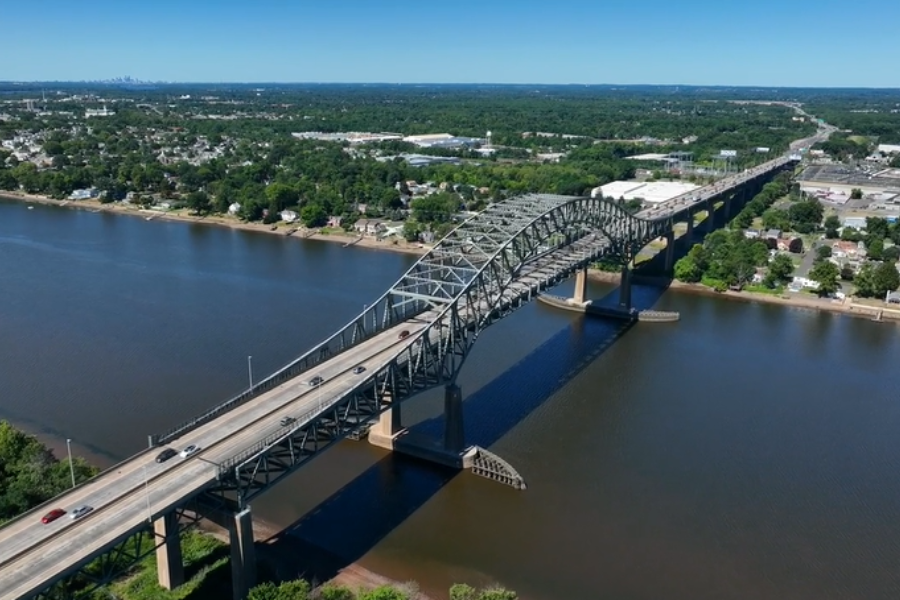Bridging the Gap: Why the Delaware River Turnpike Bridge Must Include a Trail Connection
Authored By: Philly Bike Action | September 17, 2025

We have a once-in-a-generation chance to extend the Circuit Trails across the Delaware River Bridge, closing a long-standing gap in the Greater Philadelphia area’s trail network and improving transportation for the Bristol, Burlington, Levittown and Trenton area. The Pennsylvania and New Jersey Turnpike Commissions are deciding how to replace or rehabilitate the aging bridge—a chance to include safe access for walking, biking, transit and driving.
Missed Connection
Just under the bridge’s west ramp, the Delaware and Lehigh Trail runs along the riverbank, while the Delaware River Heritage Trail hugs the east bank. Both trails are part of the East Coast Greenway (ECG) stretching from Maine to Florida, as well as the Circuit Trails network. These two complementary routes are separated by a long stretch without pedestrian or bike crossings between the Tacony–Palmyra Bridge 13 miles downriver and the Lower Trenton Bridge.
To make matters worse, there’s currently no public transit that crosses the Delaware River Bridge directly.
To get from Bristol, PA, on the west side of the bridge to Florence, NJ, on the east without a car requires a nearly 90-minute trip involving a bus, a train and two separate state transit agencies. And one leg of this trip may disappear in 2026 if SEPTA funding shortfalls lead to cuts.
With the current state of the bridge, the connection between these two communities just a mile apart is effectively severed for anyone who does not own a car—approximately 20,000 households in the counties on either side of the river—or for households who have only one car (around 30% of the population of the area—125,000 households across both counties), according to the United States Census Bureau (S0801).
A shared-use path would be life changing for people with limited access to vehicles in communities adjacent to the bridge, including:
20,000 households who do not own a car
125,000 households who own just one car
A separated pedestrian and bike path along the bridge would enable residents to access jobs across the river with just a 35-minute walk or 15-minute bike trip.
Public Support for a Trail Connection
Last fall and winter, the Turnpike Commission conducted a public survey that did not include any questions addressing the possibility of a pedestrian and bicycle sidepath. Despite that unfortunate omission, our analysis of the survey shows that more than 300 residents, business owners and visitors to the area still submitted comments related to bicycle and pedestrian connections, with many requesting a crossing connected to the existing trail infrastructure in the area.
One commenter stated that “Being a one-car family of four is challenging with limited public transportation and biking options,” and other demographic questions on the survey confirm that the same significant portion of respondents have no access to a car, or share limited access to one car within a household.
The survey did ask a question about the impact of lack of transportation, to which commenters repeatedly mentioned its negative effects on their job searches and career evolutions:
“I could not accept a job in New Jersey because my commuting options were not reliable enough to get me there.”
“There are jobs that I have not applied to because this bridge doesn’t have public transportation access.”
“My dad wanted to apply for a job across the river but due to lack of transportation, we wouldn’t been able to work out how he would get there on time and get back safely home.”
A Sidepath Solution
25% of all survey responses specifically supported the addition of a pedestrian/bike path, a stunning number given that there was no explicit mention of this option in the survey or any of the project materials. Many others raised concerns—like property values, economic impact on local businesses, and noise—that such a path would help alleviate.
Many respondents worried that bridge construction would lower property values. While the Turnpike Commission should be conscious of local residents’ concerns about the noise, disruption, and economic impact of construction, it’s notable that an impact study on the East Coast Greenway found that investment in trails and active transportation infrastructure can meaningfully raise property values within a quarter mile by an average of 5%.
The same study found that on average, each mile of completed trail generates $4.8M in additional economic activity. When applied to the trail connection between existing communities on either side of the river, the economic benefits may well be multiplied, helping to mitigate other concerns expressed in the survey about impact to local businesses on both sides of the river if a multi-year bridge replacement project goes ahead.
Providing non-car alternatives to crossing the bridge would eventually also help address residents’ expressed concerns about traffic, construction noise, and the environmental impact of automobiles.
Bicycle and Pedestrian Bridge Paths that Came Before
Bicycle and pedestrian side paths have been integrated into many other bridges in the region, including those carrying interstate highways (the Benjamin Franklin Bridge in Philadelphia carrying I-676, and the Scudder Falls Bridge north of Trenton carrying I-295), with positive results for the surrounding communities.
Bristol Borough on the west river bank benefits from many East Coast Greenway visitors on the D&L Trail, which also connects residents to local parks in the town. A business owner in Bristol stated in the ECG impact study that “We put bike racks in and they definitely get used. We are looking forward to the gaps in the trail getting closed north and south of here so more folks can stop by.”
Several survey respondents stated that they use the existing bridge with bicycles on a car rack to cross the river for “access to bike paths from Philadelphia to the Delaware River Heritage Trail in New Jersey” but would prefer to ride the whole way. As the larger trail network in the region becomes more and more complete, recreational use will continue to rise and bring tourism and business to the area—an economic boost that should not be restricted to only one bank of the river!
The Time is Now
A pedestrian and bicycle sidepath on any proposed bridge replacement or rehabilitation brings clear economic, recreational, and community benefits for residents and visitors.
Our analysis of the public survey data shows strong support for increased access through the lenses of environmental justice, equitable transit access, and economic opportunities for residents and local businesses. The best way to accomplish this is a separated sidepath on the bridge, forming a crucial connection between separated communities. The additional cost of a multi-modal connection is small compared to the outsized benefits it will bring to the area.
The Pennsylvania Turnpike Commission should build this important link in the East Coast Greenway and Circuit Trails network, and there is no better time to accomplish this than during a planned bridge replacement.


